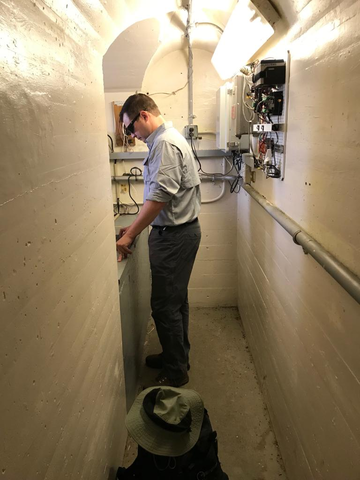VSPECT ®を使用した検証:不良センサーか不良データか?
by Jacqalyn Maughan | 更新日: 04/06/2023 | コメント: 0

振動ワイヤセンサーの測定値が不良なのは、データの不規則性や誤りが原因だと思ったことはありませんか?データの問題が原因ではないかもしれないと知ったら、驚かれるかもしれません。Campbell ScientificのVSPECT®製品ファミリー(CR6, CRVW3, AVW200, and VWAnalyzer)以外のデータ収集システムをご使用の場合、測定値の不良はデータ収集システムの脆弱性が原因である可能性があります。
VSPECT:優れた測定技術
Campbell Scientificでは、センサーが損傷し交換が必要だと考えるお客様から多くのご相談をいただいています。交換は費用と労力がかかる可能性があるため、確実な判断のためにセカンドオピニオンと検証をご希望でした。Campbell Scientificの測定技術を搭載したVSPECTは、センサーの故障か、既存のデータ収集システムが誘導電気干渉の影響を受けているかを判別し、誤ったデータや不安定なデータの原因となる可能性があります。
先日、ある見込み顧客を訪問し、ハンドヘルドVWAnalyzerを用いて、問題がセンサーに起因するものか、それとも他の原因によるものかを調べました。このケースでは、センサーの故障ではなく、データ収集システムの測定性能不足が原因であることが分かりました。このお客様は、グラウト充填されたピエゾメーターとひずみゲージの交換が必要ないことにご満足いただけました。交換すると、100万ドル以上の人件費と時間がかかっていたはずです。
VSPECT は、あらゆる電気的干渉の中から共振センサー周波数を識別します。
重要な監視ネットワークには、正確で再現性の高いデータが必要です。VSPECTの特許取得済み測定およびデジタル信号処理アルゴリズムは、バイブレーティングワイヤーセンサーの基本周波数を正確に特定しながら、あらゆる電気的干渉を排除します。測定から電気的干渉(送電線、水力発電、高周波溶接機、建設機械、電気鉄道などによるもの)を除去することで、精度と分解能の両方が向上します。
CR6 などの VSPECT 対応 Campbell Scientific データ収集製品は、測定から電気的干渉を除去するだけでなく、数十年にわたってセンサーのパフォーマンスを追跡するための診断データを測定して保存できます。
クレジット: Campbell Scientific, Inc. の Michael Adams、Eric Schmidt、Josh Brown がこの記事に貢献しました。
ご質問がある場合は、以下のコメント欄にご記入の上、弊社の営業チームおよびアプリケーション エンジニアまでお問い合わせください。
















 Jacqalyn Maughan is the Marketing Specialist in the Infrastructure Group at Campbell Scientific, Inc. She received her bachelor's degree in Public Relations with a minor in Multimedia Development. Away from work she enjoys spending time with her family and two feline children, reading, and learning new things.
Jacqalyn Maughan is the Marketing Specialist in the Infrastructure Group at Campbell Scientific, Inc. She received her bachelor's degree in Public Relations with a minor in Multimedia Development. Away from work she enjoys spending time with her family and two feline children, reading, and learning new things.
コメント
Please log in or register to comment.